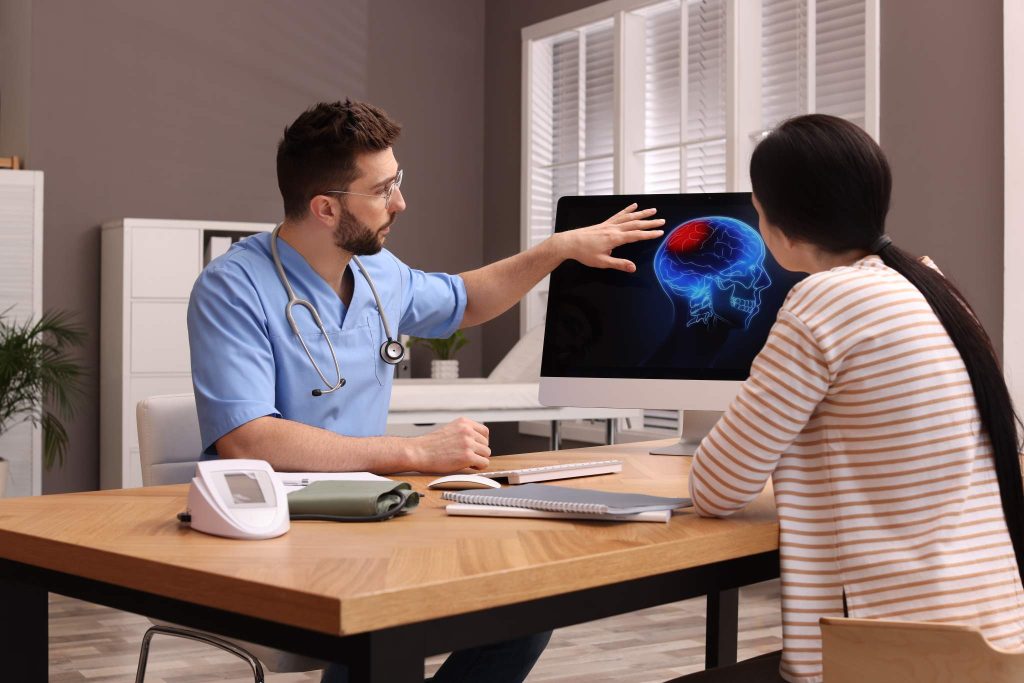If you’ve been injured in an accident, you might be experiencing severe pain and it’s scary to think you might even have a broken bone! That’s why it is so important to seek medical care from an orthopedic specialist who can help assess your car accident injury and determine what is really going on. Injuries to a joint can be tricky to self-diagnose because of your pain at the moment. Your doctor will help determine whether you are experiencing a shoulder dislocation or sprain.
What Is a Sprain?
When you trip or fall and try to catch yourself with your hands, the way you land and the sudden force on your wrist up through your shoulder could cause a shoulder sprain. That is because the ligaments surrounding the shoulder joint are stretched out of their normal range of motion and can even tear. A sprain is considered mild when the ligaments are stretched to an uncomfortable degree, while a more moderate to severe strain involves torn ligaments. It is important to see your orthopedic doctor when you’ve experienced what might be a sprain to receive treatment and help avoid chronic pain.
How to Diagnose a Sprain
In the case of a moderate to severe sprain, your doctor will likely want to rule out a broken bone with advanced diagnostic imaging. An X-ray will help provide a clear image of the injured area and confirm there aren’t any fractures. After this initial diagnostic test, your orthopedic doctor may then recommend a CT scan that will provide a more detailed image of the affected area, including bones and soft tissues.
Treating Sprains
When you experience a mild sprain, you may experience slight discomfort and mild pain and attempt to treat the affected area at home. The most common sprain is an ankle sprain, commonly referred to as a “twisted ankle”. In many of these cases, you can use the RICE method at home, which includes resting and icing the affected area, using compression bandages on the area if there is swelling, and elevate the area as much as possible.
However, with more moderate to severe sprains, at-home treatment may not be enough to treat the pain and discomfort, especially if the ligaments are torn. With a shoulder sprain, your doctor may recommend a sling to help limit the use of the shoulder joint while the area heals. Swelling is common and a sling can help immobilize the area so the swelling can go down. Your doctor may also emphasize stretches and exercises as part of your treatment plan to help re-strengthen the area.
What Is a Dislocation?
Bracing yourself in a fall or experiencing a sports injury are possible ways to experience a shoulder dislocation. When you dislocate your shoulder or another joint, the bone is forced out of position from within the joint due to the injury. A dislocated joint is extremely painful and often you are unable to move the affected area. It is even more important that you seek medical treatment right away if you think you have experienced a shoulder dislocation because of how it will significantly impact your daily life.
How to Diagnose a Dislocation
When a joint is dislocated to the point that you cannot move the affected bone, you might wonder why your doctor would need to use diagnostic testing to confirm because it feels so obvious! However, in order to confirm a shoulder dislocation, your doctor will also want to rule out a broken bone or any other complications in the injured area. Your doctor will likely first use an X-ray to view the damage to bones and joints. They will likely also want to see images from an MRI to also show how any soft tissues surrounding the area may be affected.
Treating Dislocations
When you have a joint dislocation, you will want an orthopedic doctor to move the joint back into place, which is called a reduction. The first step of treatment is for your doctor to use gentle manipulative techniques to get the bones into their proper positions before anything else can occur. After the joint is back in its proper place, your doctor may use a combination of ice, pain medication, and even a sling to immobilize the area while it heals. Similar to a sprain, your doctor will likely recommend stretches and exercises to slowly reintroduce movement to the joints.
Whether you hurt your shoulder joint from a fall, a sports injury, or a car accident, it is important to meet with an orthopedic doctor to confirm whether it’s a sprain or a dislocated shoulder. The team of orthopedic doctors at AICA Orthopedics can help develop an individualized treatment plan for you so you can get back to your regular range of motion while pain-free! Call us now.





